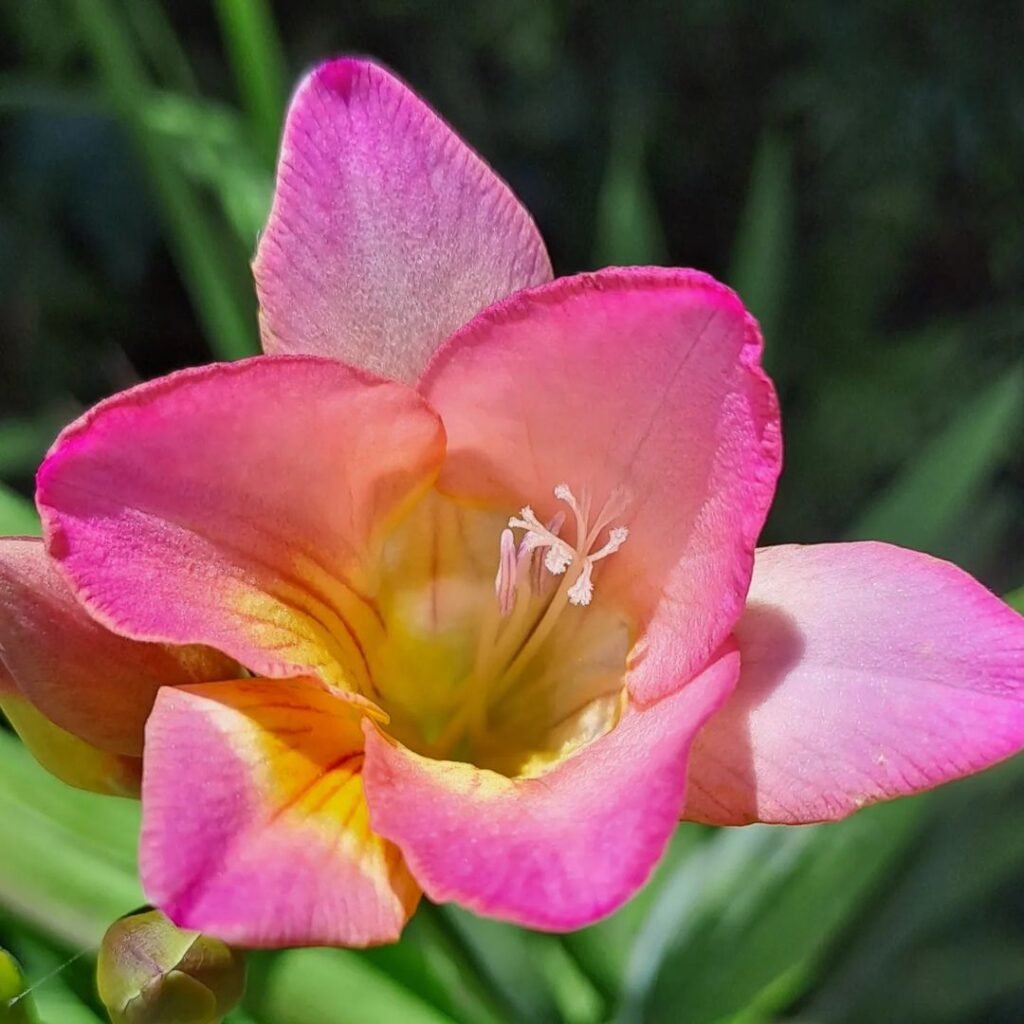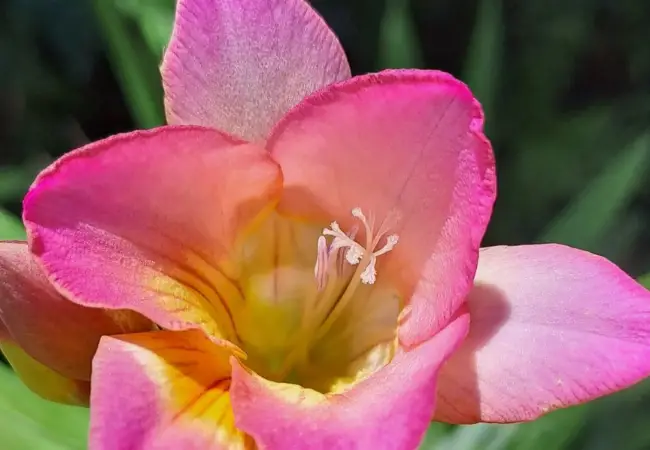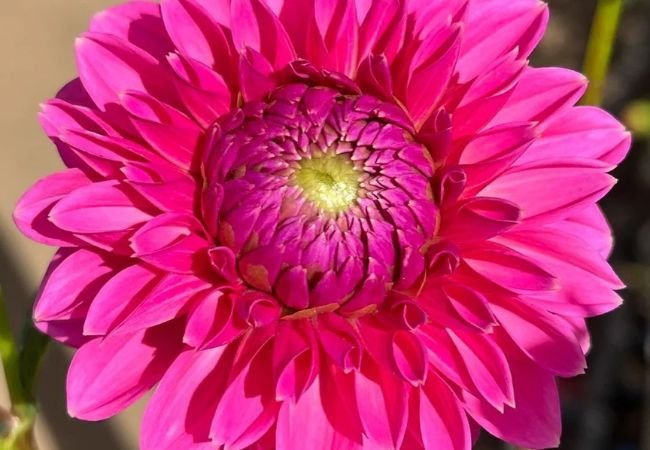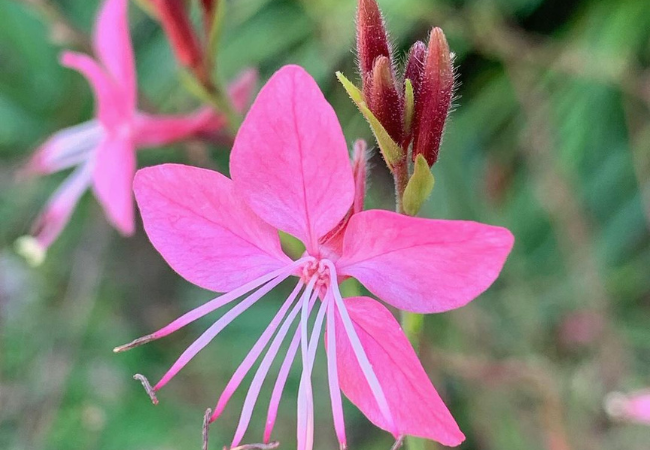Discover the sweet-smelling world of Freesia Flowers. Learn about different types, how to grow and care for these fragrant blooms and their benefits for gardens. Perfect for USA gardeners looking to add colorful, sweet-scented flowers to their landscapes or indoor spaces.
Freesia are lovely flowers that can bring both beauty and fragrance to your garden. Let’s explore these charming blooms and learn how to grow them in your own backyard.
Here’s an easy and verified chart for Freesias:
| Category | Details |
|---|---|
| Botanical Name | Freesia spp. |
| Common Name | Freesia |
| Plant Type | Bulbous perennial |
| Hardiness Zone | Zones 9-11 (usually grown as annuals in colder zones) |
| Sun Exposure | Full sun to part shade |
| Soil Type | Well-draining, fertile soil |
| Watering Needs | Average; keep soil evenly moist |
| Growth Habit | Upright, clump-forming |
| Height/Spread | 1-2 feet tall, spread of 6-12 inches |
| Special Features | Fragrant funnel-shaped flowers in various colors (white, yellow, pink, purple, red); blooms in spring to early summer; excellent cut flowers; sweet fragrance; attracts pollinators |
What are Freesias?

Freesias are flowering plants known for their sweet smell and colorful, funnel-shaped flowers. They’re native to Africa but are now grown in many parts of the world, including the USA.
Types of Freesias
There are several types of freesias:
- Single Freesias: Have one layer of petals
- Double Freesias: Have multiple layers of petals
- Miniature Freesias: Smaller versions of the classic types
Colors and Shapes
Freesias come in many colors:
- White
- Yellow
- Pink
- Red
- Purple
- Orange
- And even bi-color varieties
The flowers grow on tall, thin stems and face upwards or outwards.
Growing Freesias
To grow freesias in your garden:
- Plant corms (bulb-like structures) in fall or early spring
- Choose a sunny spot with well-drained soil
- Plant corms about 2 inches deep and 3 inches apart
- Water regularly but don’t overwater
For more detailed planting advice, check out the Cooperative Extension System website.
Caring for Freesias
Freesias need some care to grow their best:
- Fertilize lightly when plants start growing
- Support tall stems with stakes if needed
- After flowering, let leaves die back naturally
- In cold areas, dig up corms and store indoors for winter
Uses for Freesias
Freesias are versatile flowers:
- Garden decoration: They look great in beds or borders
- Cut flowers: Freesias last well in vases and smell wonderful
- Container plants: Grow them in pots on patios or balconies
- Fragrance: Plant near seating areas to enjoy their sweet smell
Freesias in Gardens
Freesias work well in many garden styles:
- Plant in groups for a big impact
- Mix with other spring-flowering bulbs
- Use in rock gardens or along pathways
The United States National Arboretum has more ideas for using flowering plants in landscaping.
Things to Watch Out For
While freesias are generally easy to grow, keep these points in mind:
- They’re not frost-hardy, so protect them from cold
- Freesias can be prone to fungal diseases if soil is too wet
- In very hot climates, they may need afternoon shade
Fun Facts about Freesias
- Freesias are named after German botanist Friedrich Freese
- They’re often used in perfumes because of their sweet smell
- In the language of flowers, freesias symbolize trust and friendship
Freesias and Wildlife
Freesias can be good for some garden wildlife:
- Bees and butterflies might visit freesia flowers
- Hummingbirds are sometimes attracted to the tubular blooms
For more info on gardening for wildlife, visit the National Wildlife Federation website.
Indoor Freesias
You can also grow freesias indoors:
- Plant corms in pots with well-draining soil
- Keep in a cool, bright spot
- Water regularly but allow soil to dry between waterings
The National Gardening Association offers more tips on indoor bulb growing.
Freesia Fragrance
One of the best things about freesias is their smell:
- The scent is often described as sweet and fruity
- Different colors can have slightly different scents
- The fragrance is strongest on warm, sunny days
Wrapping Up
Freesias are delightful flowers that can bring color and sweet fragrance to your garden. While they need some care, especially in colder areas, their beautiful blooms and wonderful scent make them worth the effort. Whether you grow them outdoors or in pots inside, freesias can add a touch of spring cheer to any space.
For more gardening tips and plant care guides, visit usagardenhub.com.







One comment on “Freesia : The Sweet-Smelling Beauties of Your Garden”